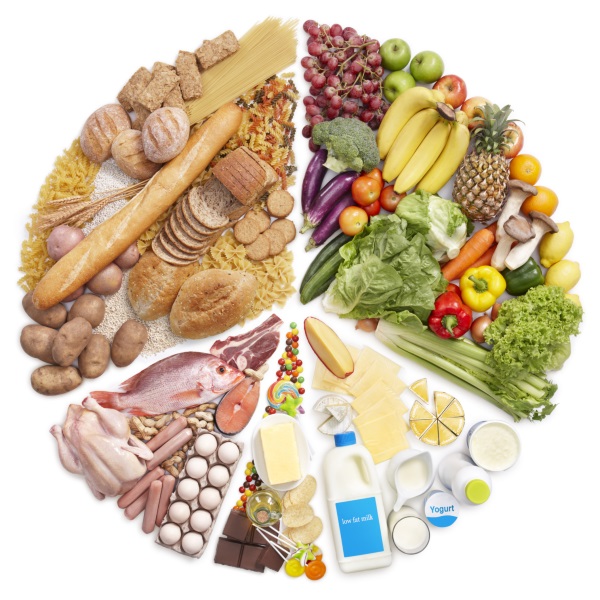Nutritions & Diet

Health is something that is easy to take for granted. When we start losing it, it's hard to believe we spent so long not valuing it. To ensure that you stay as healthy as possible, we've outlined a guide that should help you do just that -- detailing your physical, mental, and emotional health.
Eating a balanced diet is vital for good health and wellbeing. Food provides our bodies with the energy, protein, essential fats, vitamins and minerals to live, grow and function properly. We need a wide variety of different foods to provide the right amounts of nutrients for good health. Enjoyment of a healthy diet can also be one of the great cultural pleasures of life.
Nutrition is the process of taking in food and using it for growth, metabolism, and repair. Nutritional stages are ingestion, digestion, absorption, transport, assimilation, and excretion.

What You Need to Know Before Getting Started
Weight loss can be achieved either by eating fewer calories or by burning more calories with physical activity, preferably both.
A healthy weight loss program consists of:
- A reasonable, realistic weight loss goal
- A reduced calorie, nutritionally-balanced eating plan
- Regular physical activity
- A behavior change plan to help you stay on track with your goals
Keep in Mind :
- Calories count
- Portions count
- Nutrition counts
- Even a small amount of weight loss can lead to big health benefits
- Strive to develop good habits to last a lifetime
- Discuss weight loss with your doctor before getting started
- Check your Body Mass Index (BMI) - an indicator of body fat - and see where it fits within the BMI categories.
- Discuss weight loss and decide on a goal. If you have a lot of weight to lose, set a realistic intermediate goal, maybe to lose 5 Kgs. Remember that even a small amount of weight loss can lead to big health benefits.
- Score your current food intake and physical activity level. Taking a good look at your current habits will help you determine what changes you might make as well as what you are doing right.
- Keep in mind that you want to develop lifestyle habits that will help you maintain your weight in a healthy range. A short-term "diet" that you "go on" and then "go off" is not the answer to long-term weight management.
- In choosing how to go about losing weight, keep in mind key habits of people who have lost weight and kept in off. These people are called "Successful Losers" by the weight control experts who have studied them.
- Getting regular physical activity
- Reducing calorie and fat intake
- Eating regular meals, including breakfast
- Weighing themselves regularly
- Not letting small "slips" turn into large weight regain
When it comes to nutrition for muscle building and weight gain there are only three rules to remember: eat more, eat often, eat quality food.
There is no other way around it. In order to gain weight you need to eat more, a lot more, but you need to eat quality muscle building food rather than junk food. Because you’re aiming to build muscle rather than just get fat, eating a lot of the wrong things will not give you the results you want.
To gain weight and gain quality muscle mass you need to base your diet around an intake of quality protein and complex carbohydrates.
If you are coping with PCOS or any of its symptoms, you may feel frustrated at times. Taking proactive steps regarding your health can improve your mood as well as reduce your symptoms. One of the best ways to do this is to create a good food/bad food list and stick to it.
Diet and exercise are important parts of managing PCOS (Polycystic Ovary Syndrome). This is because young women with PCOS often have higher levels of insulin (a hormone) in their blood, and many have trouble maintaining a healthy weight. Knowing the right foods to eat as well as the kinds of food to limit can improve the way you feel. It will also help you lose weight. Eating well, staying active, and maintaining a healthy weight (or losing even a small amount of weight if you’re overweight) can improve PCOS symptoms.
A diabetes diet simply means eating the healthiest foods in moderate amounts and sticking to regular mealtimes. A diabetes diet is a healthy-eating plan that's naturally rich in nutrients and low in fat and calories.
If you have diabetes or prediabetes, your doctor will likely recommend that you see a dietitian to help you develop a healthy eating plan. The plan helps you control your blood sugar (glucose), manage your weight and control risk factors for heart disease, such as high blood pressure and high blood fats.
When you eat excess calories and fat, your body responds by creating an undesirable rise in blood glucose. If blood glucose isn't kept in check, it can lead to serious problems, such as a dangerously high blood glucose level (hyperglycemia) and long-term complications, such as nerve, kidney and heart damage.
You can help keep your blood glucose level in a safe range by making healthy food choices and tracking your eating habits.
For most people with type 2 diabetes, weight loss also can make it easier to control blood glucose and offers a host of other health benefits. If you need to lose weight, a diabetes diet provides a well-organized, nutritious way to reach your goal safely.
The DASH diet emphasizes portion size, eating a variety of foods and getting the right amount of nutrients.
DASH stands for Dietary Approaches to Stop Hypertension. The DASH diet is a lifelong approach to healthy eating that's designed to help treat or prevent high blood pressure (hypertension). The DASH diet encourages you to reduce the sodium in your diet and eat a variety of foods rich in nutrients that help lower blood pressure, such as potassium, calcium and magnesium.
By following the DASH diet, you may be able to reduce your blood pressure by a few points in just two weeks. Over time, your systolic blood pressure could drop by eight to 14 points, which can make a significant difference in your health risks.
Because the DASH diet is a healthy way of eating, it offers health benefits besides just lowering blood pressure.
Your thyroid is your body's silent workhorse—most of the time, it functions so smoothly that we forget it's there. But this little, butterfly-shaped gland that sits at the base of your neck helps regulate your metabolism, temperature, heartbeat, and more, and if it starts to go haywire, you'll notice. An underactive thyroid—when the gland fails to produce enough thyroid hormone (TH)—can bring on weight gain, sluggishness, depression, and increased sensitivity to cold. An overactive thyroid, on the other hand, happens when your body produces too much TH, and can cause sudden weight loss, irregular heartbeat, sweating, nervousness, and irritability.
Genetics, an autoimmune condition, stress, and environmental toxins can all mess with your thyroid—and so can your diet, one factor you can completely control.
Pregnancy is a demanding physiological state. In India, it is observed that diets of women from the low socioeconomic groups are essentially similar during prepregnant, pregnant and lactating periods. Consequently, there is widespread maternal malnutrition leading to high prevalence of low birth weight infants and very high maternal mortality. Additional foods are required to improve weight gain in pregnancy (10-12 Kg) and birth weight of infants (about 3 Kg). It is hence important to ensure provision of extra food and healthcare to pregnant and lactating women
Nutrition for kids is based on the same principles as nutrition for adults. Everyone needs the same types of nutrients — such as vitamins, minerals, carbohydrates, protein and fat. Children, however, need different amounts of specific nutrients at different ages.
A healthy diet helps children grow and learn. It also helps prevent obesity and weight-related diseases, such as diabetes.
Strong bones are crucial to good health, and good nutrition is crucial to strong bones. Find out what you need to protect the health of your skeleton for years to come. Nutrition strongly affects bone health throughout our lives. For instance, what our mothers eat while pregnant with us will affect our eventual bone mass as adults. As children, our bones are almost exploding with rapid growth. If we break something, no problem — we knit back together like Plastic Man. (Which is good, considering how many times we’ll probably fall face-first off the monkey bars.) By around 18 or 19 years old, we’ve reached about 95% of our peak bone mass. We can continue to build some bone in our 20s. But by age 30, we stop making any more “bone deposits”. Then the withdrawals start.
Luckily, there is a lot you can do even as an adult to protect and even strengthen your bones.
Good Nutrition, Good Remodeling
If we’re well-nourished, then our bones remodel themselves robustly.
Imagine a well-trained construction team renovating a house with high-quality materials.
Microtrauma — tiny cracks and damage — tell the bones to adapt, repair, and ultimately strengthen. Old bone is removed and new bone is laid down. All is well.
If we aren’t well-nourished, then our bones don’t recover well.
Imagine the same construction crew — but this time, their materials are cheap and poor quality. They don’t have the items they need. Maybe they cut a few corners just to get the job done.
The resulting structure is shoddy. New bone isn’t laid down. The old bone just gets weaker over time.

